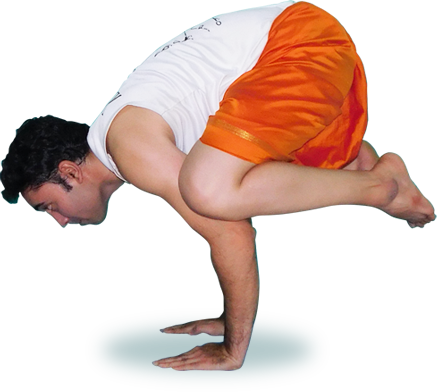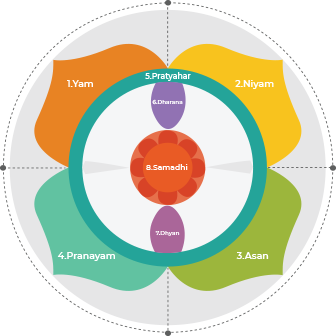Services

Ashtanga Yog

Ashtanga Yog
Yog is so powerful that it can start to change the person within minutes of commencing yogasan incorporating all the ashtang yog basic principles of Yam, Niyam, Asan, Pranayam, Pratyahara & Dharana when performing any asan. Today we have lost all these basics and focus only on the physical asan and wonder why our body does not progress as the ancient texts have clearly conveyed.
Yam
Yam defines ourselves in terms of lifestyle and character. This is essential for preparing the body for positive thoughts, vibrations and development. So Ahimsa (non violence), Satya(truthfulness), Astheya(non stealing), Aparigraha(non possessiveness), Brahmacharya (celibacy) are essential for personal growth and development. This has been outlined as the first basic step for growth.
• Ahimsa in every activity – whether with people, animals, food items, etc is essential.
Satya in all aspects & on all occasions.
• Astheya at all times whether it’s stealing money or any other item, stealing of ideas, personnel, or copying.
• Aparigraha in every aspect of life – whether in relationships, mental, emotional possessiveness is also not acceptable.
• Brahmacharya is essential as sperm & ova are supposed to be the most powerful energy source within the body. Suffice to state that the whole objective of the human body and nature is to develop good quality & quantity of sperm & ova and prepare yourself for your progeny and its qualitative development. So wasting this enriched energy source is like releasing ‘nuclear energy’. So please consider increasing / accruing benefits to your own body.
Niyam
Sauncha (cleanliness), Santosha (contentment), Tapa (self discipline), Svadhyaya (self reflection) & Ishvarapranidhana ( surrender to higher power)
• Sauncha – cleanliness of the whole body externally, internally physically, mentally of all thoughts and emotionally feelings as well.
• Santosha – is an experience that one must be content at all times
• Tapa – disciplined lifestyle in all its aspects and ways to regulate and enhance bodily functions qualitatively.
• Svadhyaya – is essential to review oneself from time to time. This has to be done with a very clear and proper framework. A skewed framework will divert your reflection into gloating and self praise when you may not deserve it.
• Ishvara Pranidhana – is about selfless work. Never work for yourself. Work for others and surrender to the higher power that exists. If one does not believe in a higher power – just look at the night sky and look at planes flying around like specs in the sky. But the larger spectrum of planets, clouds, stars, milky ways are all moving in a systematic manner. How can this happen? You can give the name GOD or Energy/Force that keeps things in order. It also corrects imbalances without losing control and returns to normality.
Asan
Postures you practise across the body. The fundamental asan learning & practise in True Yog is about following the process and not the destination. The process of asan is more important than just the end position. So the starting position, fully involved physically, mentally, emotionally and spiritually during this process and moving as slow as possible while being aware of every aspect of influence and change and thus getting to your end point asan. Then maintaining the asan and returning to your starting position with complete control and slowness of movement throughout.
Pranayam
Modulation and understanding effects with controlled extension of breath. This is about understanding and experiencing the effects of breath-in, breath-out, holding and cumulative benefits. The breathing has to be done with awareness and as per instructions – slow, fast, etc.
Pratyahara
Process of detaching oneself from sensory surroundings. This can be quite difficult as our minds are very distractible and all senses stimulates us to respond. We need to develop our stillness to the point of only being focussed on the activity at hand and no stimulation from any source – internal or external should distract you in any way.
Dharana
Concentration – to learn to bind your consciousness/ concentration to one object, place, thought, idea, etc. This concentration and detachment consistently over time leads to an ability to stay focussed for longer duration without any harm or damage to your system. This requires a lot of practice and dedication to grow further.
Dhyan
When sustained dharana is achieved, it leads to dhyan(meditation). When you can achieve focussed attention, perfect concentration over a longer period with stillness, you are slowly delving into dhyana. One of the big errors we feel is about learning to focus on something for meditation – whether its tratak, mantra chanting or listening to sounds/music, etc. are actually distractions and can lead to difficulty when one has to shift completely to the abstract. So it’s best to focus on stillness and no stimulation. Becoming aware of your breath feeling – as air passes in and out of your body is a great simple strategy for beginners.
Samadhi
© 2025 Health Siren All Rights Reserved.
Design & Developed by Pixel N Paper